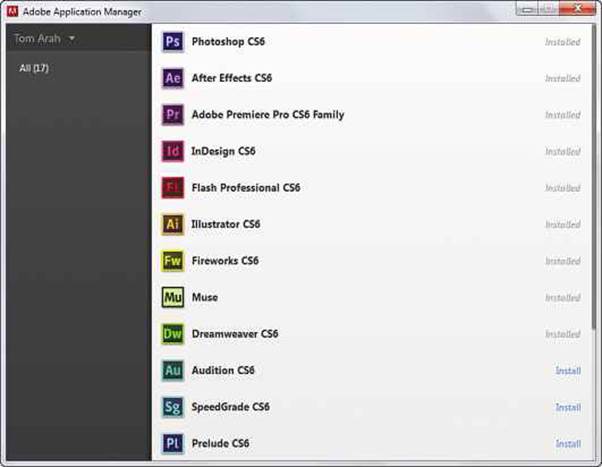We investigate Adobe’s Creative Cloud and
asks whether it’s all good news for end users
Adobe’s Creative Suite (CS) is currently
going through a period of fundamental change. In previous columns I’ve focused
on this seismic shift away from Flash towards universal HTML5 and
device-specific native apps, but equally significant is Adobe’s new software
and business model called the Creative Cloud, which promises users “ongoing
membership” of “a digital hub where you can explore, create, share, and deliver
your work”. We’ve heard this kind of cloud-based-revolution hype before, which
almost invariably proves a crashing disappointment (often literally). So is
Creative Cloud any different?

Adobe
is heavily promoting its new Creative Cloud, which offers many powerful
applications
The buzzword “cloud” might suggest that
Adobe has set up a massive server farm to stream its CS applications directly
to end users, which is accessible from any internet-enabled device, but it
hasn’t. Creative Cloud remains based around the existing native CS applications
installed locally on your main computer, plus one backup copy (although a small
advance is that one of your installations may now be Windows and the other
Mac). The fact that it isn’t true cloud-based SaaS is a good thing, since it
means our applications will work just as before and access won’t depend on a
working internet connection.
That said, you’ll need to connect at least
once every 30 days for Adobe to check your subscription status, as Creative
Cloud is essentially a reworked version of the software subscription model that
Adobe introduced with CS5.5, but without the flexibility of renting individual
applications. Before you dismiss Creative Cloud, you should check the prices.
The monthly rental for a full year’s subscription to the CS5.5 Master
Collection costs $174, but to subscribe to Creative Cloud costs $70.5 (inc
VAT). While the CS5.5 subscription offered no discounts to existing CS users,
Adobe now offers registered owners of any CS3-or-later application the first
year of Creative Cloud membership for only $40.5 (inc VAT) per month. This
pricing places a very different slant on Creative Cloud. Think of the CS5.5
episode as an experimental way to check the feasibility of subscriptions, but
this is the real thing and its aggressive pricing and advertising demonstrate
that Adobe is committed to making it work. It looks as though Adobe expects the
majority of CS users to become Creative Cloud members eventually. So what can you
expect if you sign up?
The magic toolbox
The Creative Cloud experience starts with
the new central Adobe Application Manager, which manages your installations.
Open this and you’re presented with a clean and simple dialog listing all the
Creative Cloud applications, starting with the 14 that make up the full Master
Collection suite. Not all of these will be relevant to your own interests, and
you don’t have to install those that you won’t use. As Adobe puts it: “think of
Creative Cloud as a magic toolbox that gives you the right creative tool the
moment you need it”. That might sound a little over the top, but the creative
power it offers – including web design and development, video production,
commercial print, interactive design for smartphones and tablets, photo editing
and vector illustration – is pretty extraordinary. As a standalone suite, the
current Master Collection represents pretty good value for money at $3967.5,
but Creative Cloud membership gives you access to all these award-winning apps
for a fraction of that cost. Positive first-user reviews show that many new
members can’t quite believe that they’ve effectively bought an access-all-areas
pass to Willy Wonka’s factory for such a knockdown price. This is all well and
good, but Adobe is determined to make Creative Cloud far more than just a new
way of paying for access to its Master Collection.

The
Adobe Application Manager lists all the Creative Cloud apps
To begin with, it provides an even wider
range of applications, starting with the inclusion of Lightroom for quickly
managing and editing your digital photos. The main beneficiaries are web
designers and developers who gain access to two additional applications: Adobe
Muse, which lets you create advanced websites with absolutely no HTML coding
skills; and the preview version of Adobe Edge, which lets you create
Flash-style animations in HTML5 (I plan to take a look at both these
applications in more detail in a future column).
Creative Cloud members also automatically
gain access not only to Adobe’s promised annual round of version x.5 releases,
but to a continuous stream of exclusive new functionality. For example, in
early September significant capabilities were added to Illustrator, Muse and
Edge; a couple of weeks later, new features including streamlined handling of
HTML5 objects, audio, video and animation were added to Dreamweaver. All this
new functionality is welcome, but even more so is the sense that you’re getting
an even better deal for your money.
Adobe is also using Creative Cloud to
extend its reach beyond the traditional desktop, with a new range of tablet
apps that you have to buy from the app stores, but Adobe extends your
membership accordingly. There are six of these Adobe Touch apps: Photoshop
Touch for image editing and compositing; Kuler for colour theme handling; Debut
for presentation of creative work; Ideas for vector-based sketching; Collage
for creating multimedia moodboards; and – most relevant to web users – Proto,
which lets you create wireframes of websites and mobile apps directly on your
tablet.